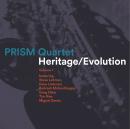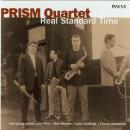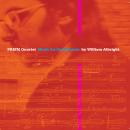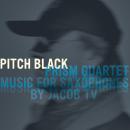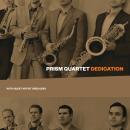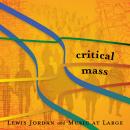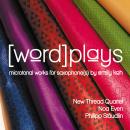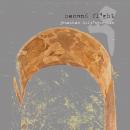People's Emergency Center
People's Emergency Center
Philadelphia, PA
| People's Emergency CenteriTunes Artist's PageiTunes Album Page | |||
|---|---|---|---|
| Song Title | Time | Price | |
| 1. | Under the Sun: I. Awakening | 05:04 | $0.99 |
| 2. | Under the Sun: II. Lonely Pairs | 03:30 | $0.99 |
| 3. | Under the Sun: III. Judgment | 06:16 | $0.99 |
| 4. | Lyric | 15:26 | |
| 5. | Been There: I. People's Emergency Center | 12:59 | |
| 6. | Been There: II. Gymnopedie | 02:32 | $0.99 |
| 7. | Serial Mood: I. Reflection | 08:17 | $0.99 |
| 8. | Serial Mood: II. Refraction | 11:59 | |
| 9. | Brown Eyes | 05:22 | $0.99 |
| 10. | Mr. Bobs and Lori Ann | 08:44 | $0.99 |
| 11. | Beneath | 02:57 | $0.99 |
| 12. | Above | 05:32 | $0.99 |
As a guiding force behind the omnivorous PRISM Quartet, Matthew Levy has been a musical midwife: helping to birth a large and eclectic repertoire of works built around the endlessly versatile sound of the saxophone quartet. But while championing so many of his colleagues, from the internationally renowned to the young and emergent, Levy has done a great disservice to a contemporary American composer with a distinctive voice: namely, Matthew Levy.
People’s Emergency Center is a chance for PRISM to finally focus on Levy’s own music, which draws freely—and often surprisingly—from classical, jazz, world, and rock traditions. The album begins with a particularly instructive example. Under the Sun is a three-part suite scored for piano (the redoubtable Jason Moran), saxophone choir, percussion, and, in its third and final movement, the Indian sitar. In the opening movement, “Awakening,” a keyboard/percussion groove serves as the engine driving the rustle and hubbub of a… what? Are those birds taking flight and singing? Or is it the sound of the urban jungle yawning and stretching to life? Either way, the winds are overdubbed to form choirs of Philip Glass-style intensity, streaked through with jagged flashes of piano. With its striking collision of American Minimalism, the rhythms of Latin and African music, and the improvisation of jazz, “Awakening” is a major statement of intent at the start of the album.
The album includes three works written just for PRISM, including “Lyric.” Levy’s voracious musical appetite apparently includes the French “Spectralists,” composers like Gerard Grisey and Tristan Murail, who create deeply-hued textures by analyzing the component parts of each sound and making those parts explicit, either by “splitting” the sound so that one or more of its overtones are audible, or reinforcing those harmonic components with other instruments. Working with this so-called “harmonic series” quickly moves the music out of standard Western tuning, and there are moments in “Lyric” that are both beautiful and unsettling—take, for example, the almost metallic ringing sound of the sax choir that ends the piece, a sign of mourning for the composer’s mother, in whose memory the work was composed.
The recording also features four works, including Serial Mood, in which PRISM is joined by an all-star line-up of jazz artists. Serial Mood is a punning title: here, Levy manages to combine the twelve-tone technique of Arnold Schoenberg, whose early 20th century experiments set music free of the constraints of tonality, with the strongly tone-centered modes of classical Greek music. The first part, “Reflection,” features Rudresh Mahanthappa, whose alto solo is full of movement and quicksilver changes of tone color, over a backdrop of softly roiling saxes and some rather insistent bass and drums, courtesy of Jay Anderson and Bill Stewart. The second half, “Refraction,” rides on a fierce post-bop groove, but the texture clears out in the middle to allow notable solos by Ben Monder, Tim Ries, and Matthew Levy himself.
TEXTURA
“It's no exaggeration to call the Prism Quartet one of the US's foremost chamber ensembles. … Levy extends the compositional circle of ‘People’s Emergency Center’ by mixing a variety of genres and styles into the twelve pieces. … In the opening part [of ‘Under the Sun’], the saxophonists assume a serpentine presence, with their Philip Glass-like patterns woven into the background fabric over which the solos appear. That Moran is the focal point of this setting is rendered even more clear when the second part, ‘Lonely Pairs,’ gives itself over entirely to the pianist for a brooding rumination, before ‘Judgment’ brings Belcastro into the fold for a six-minute exploration characterized first by introspection and then joyful exuberance.” [FULL ARTICLE]
WRTI
“Saxophonist and Prism Quartet founder Matthew Levy has spent his career getting other composers played; now the spotlight's on him in a new CD, and what a brilliance it reveals. … Levy's voice is at once vernacular and otherworldly, steeped in jazz but living in—as Henry Cowell would have it—the whole world of music. … [O]ne of the unexpected treats that Levy offers … is the overarching spirit of generosity—to the listener and to each player. All the music of his I've heard exhibits this. Whether it's rhythmically striking, sonically challenging, or a charming tune, it is genial music offered warmly to a real world filled with real people who want something good to hear.” [FULL ARTICLE]
—Kile Smith
JAZZIZ
"The past 30 years have seen the rise and proliferation of the saxophone quartet as a performing ensemble, and in that time no group has been more unique or accomplished than the PRISM Quartet. By producing over 200 new pieces of music — through commissions, recordings and concerts — PRISM has been at the vanguard where classic, jazz, improvisational and world music meet in a common language.”
—George Grella, Jr
POP MATTERS
"Serious compositions often tell stories. On People’s Emergency Center the individual tracks don’t tell stories so much as they act out 12 independent novels. All you need is one listen to the cyclical, sometimes minimal opening track “Awakening” to know that a) this will be a most unusual album and b) it’s going to be quite remarkable too. No matter what style you nail the PRISM Quartet and People’s Emergency Center to, this album should go down not only as one of 2014’s finest releases but also as one of the most unforgettable works of chamber music for years to come." [FULL ARTICLE]
—John Garratt

